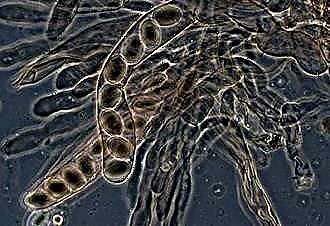In the development of chronic pharyngitis, catarrhal, hypertrophic and atrophic forms are distinguished, which characterize morphological changes in the pharynx. The nature of the ongoing pathological processes in the mucous membrane depends on the clinical symptoms of the disease, treatment tactics, as well as predictions. Some experts also distinguish subatrophic pharyngitis, which is regarded as the initial form of atrophic.
 Despite the fact that the most common form of pharyngitis, both acute and chronic, is catarrhal inflammation, atrophic pharyngitis has received increased attention. This is due to the fact that it is characterized by a persistent course, it is difficult to correct, when exposed to unfavorable factors, it can lead to the development of a malignant tumor. The subatrophic form of pharyngitis is also characterized by pronounced clinical signs. However, pathological changes at this stage are reversible. Correct treatment of the patient can lead to a complete restoration of the mucous membrane, which was the reason to isolate subatrophic pharyngitis in a separate form.
Despite the fact that the most common form of pharyngitis, both acute and chronic, is catarrhal inflammation, atrophic pharyngitis has received increased attention. This is due to the fact that it is characterized by a persistent course, it is difficult to correct, when exposed to unfavorable factors, it can lead to the development of a malignant tumor. The subatrophic form of pharyngitis is also characterized by pronounced clinical signs. However, pathological changes at this stage are reversible. Correct treatment of the patient can lead to a complete restoration of the mucous membrane, which was the reason to isolate subatrophic pharyngitis in a separate form.
Causes
Chronic subatrophic pharyngitis develops as a result of exposure to various adverse factors. Most often, the pathological condition is caused by irritation of the pharyngeal mucosa with various substances: nicotine, dust, chemical impurities. The abuse of strong alcoholic beverages has a negative impact.
In many cases, the cause of the development of this form of pharyngitis is a pathology caused by difficulty in nasal breathing. In this case, the patient breathes through the mouth, which contributes to the defeat of the oropharynx. The development of this pathological condition may be due to the abuse of vasoconstrictor drops. Of great importance in the development of atrophic pharyngitis is the presence of concomitant diseases, diabetes mellitus, autoimmune diseases, pathology of the gastrointestinal tract. Insufficient intake of vitamin A into the body also leads to the development of subatrophic pharyngitis.
Clinical signs
The main symptoms of the disease are as follows:
- dry throat, accompanied by the desire to take a sip of water;
- foreign body sensation when swallowing;
- coughing and choking;
- dry cough.
The general condition of the patients is usually not affected. In severe cases, there may be malaise and an increase in body temperature up to 37.2-37.3 degrees.
The most common symptom of subatrophic pharyngitis is coughing.
It has its own characteristics that make it possible to distinguish it from a cough in pneumonia, bronchial asthma. By its nature, the cough resembles whooping cough, just as strong, loud, paroxysmal, can disturb the patient several times within one hour, as well as during a night's sleep. This tires the patient, contributes to the development of nervousness.
The period of exacerbation of the disease can last more than a month.
During this time, the discomfort in the throat decreases. However, due to the presence of a strong cough, soreness develops in the epigastric region, due to the tension of the muscles of the diaphragm. As the symptoms disappear, this symptom regresses.
You can clarify pharyngitis and its shape by conducting an objective examination of the pharynx, pharyngoscopy. The study is carried out using an additional light source and a spatula. Pressing them on the tongue, the specialist examines the condition of the mucous membrane of the pharynx, examines the tonsils.
 With subatrophic pharyngitis, the greatest changes are localized on the posterior wall of the pharynx. In the stage of remission, the mucous membrane is thinned, blood vessels shine through it. It is pale or bluish in color. With an exacerbation of the process, hard-to-separate mucus, prone to crusting, can accumulate on the mucous membrane.
With subatrophic pharyngitis, the greatest changes are localized on the posterior wall of the pharynx. In the stage of remission, the mucous membrane is thinned, blood vessels shine through it. It is pale or bluish in color. With an exacerbation of the process, hard-to-separate mucus, prone to crusting, can accumulate on the mucous membrane.
Preventive actions
Treatment of chronic subatrophic pharyngitis is complex, aimed at increasing the patient's immunity, and also includes anti-inflammatory measures. An important factor, without which it is impossible to carry out effective therapeutic actions, is the exclusion of provoking factors that contribute to the development of the disease. First of all, this concerns bad habits, especially smoking, as well as occupational hazards.
The food ration is of great importance for the normalization of the condition of the mucous throat. It should not include foods that irritate the mucous membranes.
Spicy, sour, hot dishes, carbonated drinks must be excluded from the menu.
Preference is given to porridges with astringent properties, well-chopped or mashed foods of moderate temperature. It is necessary to consume a sufficient amount of liquid, since dry mucous membrane has an additional irritating effect, promotes the formation of crusts. In addition, this condition of the mucous membrane favors the effects of pathogens.
It is mandatory to diagnose and further treatment of all concomitant diseases, especially the respiratory tract, sinuses, oral cavity, as well as pathology, accompanied by reflux of contents from the stomach into the esophagus and throat. A special place among the concomitant pathology is given to chronic tonsillitis, which significantly reduce immunity, and the affected tonsils themselves are a source of infection. In this regard, the rehabilitation of these entities must be carried out without fail.
Treatment activities
Treatment of subatrophic laryngitis consists in the use of topical drugs that have anti-inflammatory, antiseptic, analgesic effects. Medicines can be in the form of pills, aerosols, lozenges. The most popular remedies are Faringosept, Septolete, Givalex.
 An ambiguous opinion exists in relation to iodine-containing preparations. Being a strong antiseptic, iodine ions have a pronounced anti-inflammatory effect. In addition, the drug has the ability to increase mucus secretion, that is, a mucolytic effect, which is a positive factor in atrophic lesions. However, its alcoholic solution dries out the mucous membrane, aggravating the condition. In this regard, it is preferable to use an oil solution, Iodditcerin, or an aqueous solution of Lugol's.
An ambiguous opinion exists in relation to iodine-containing preparations. Being a strong antiseptic, iodine ions have a pronounced anti-inflammatory effect. In addition, the drug has the ability to increase mucus secretion, that is, a mucolytic effect, which is a positive factor in atrophic lesions. However, its alcoholic solution dries out the mucous membrane, aggravating the condition. In this regard, it is preferable to use an oil solution, Iodditcerin, or an aqueous solution of Lugol's.
Among the local procedures, gargling with various antiseptic agents, Miramistin, Rotokan, Furacilin, Povidone-iodine, is used. As for such a popular remedy as soda solution, in this pathology, many otolaryngologists do not recommend using it, since soda can also help dry out the mucous membrane.
Among physiotherapeutic methods, alkaline-oil inhalations are effective, as well as procedures prepared with the use of herbal decoctions. To soften the crusts and make them easier to pass, use throat irrigation or inhalation with agents such as Fluditek or Bronchoboss. Phonophoresis of the throat, UHF radiation, electrophoresis with anti-inflammatory solutions are also used. Oil solutions of vitamin A or E, which are used to lubricate the posterior pharyngeal wall, also have a softening effect.
When deciding on antibiotic therapy, it is assumed that these drugs have pronounced side effects, including leading to a decrease in immunity.In addition, viruses rather than bacteria are most often involved in the development of any form of pharyngitis.
The use of antibiotics is considered justified only if the microscopic examination from the pharynx reveals a specific bacterial pathogen.
Both during an exacerbation and as a prophylaxis, drugs with immunomodulatory effects can be used. Most popular
- Bronchomunal;
- IRS-19;
- Imudon;
- Polyoxidonium.
Carrying out these measures will strengthen the immune system, will be the prevention of exacerbation of any form of pharyngitis. Ignoring such actions leads to the development of further destructive processes in the mucous membrane. Over time, the patient may develop an atrophic form of pharyngitis, significantly impairing the quality of life of patients.



